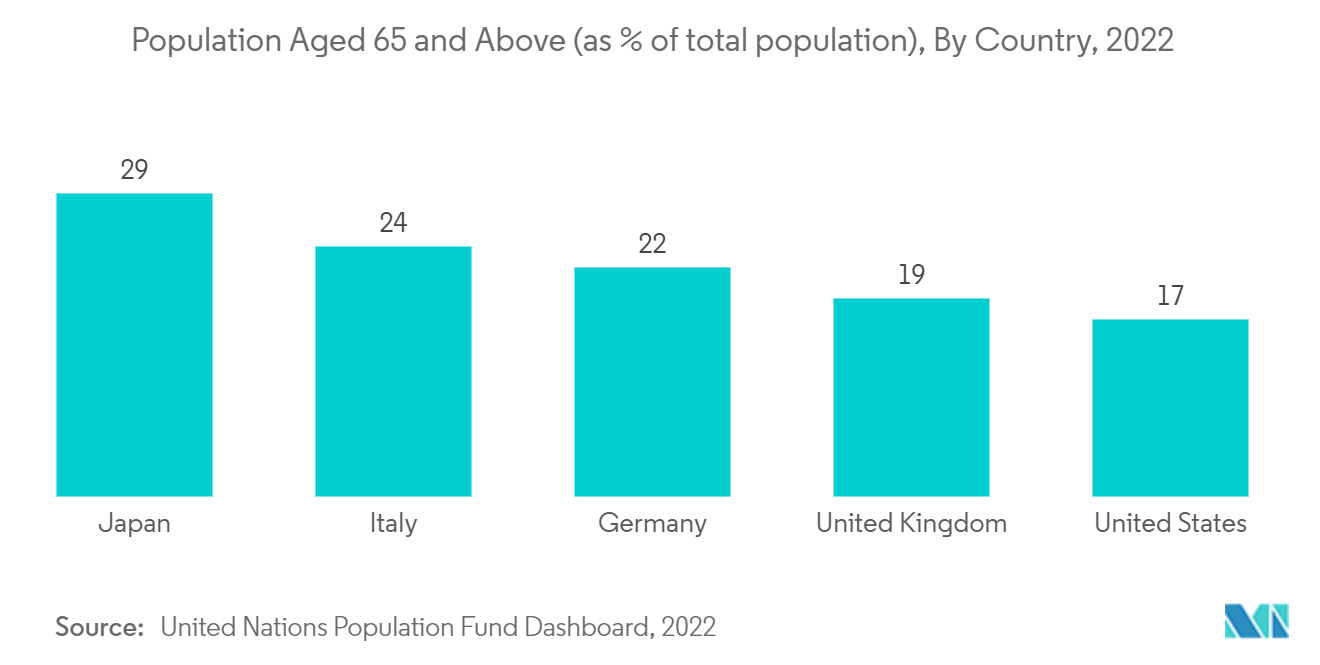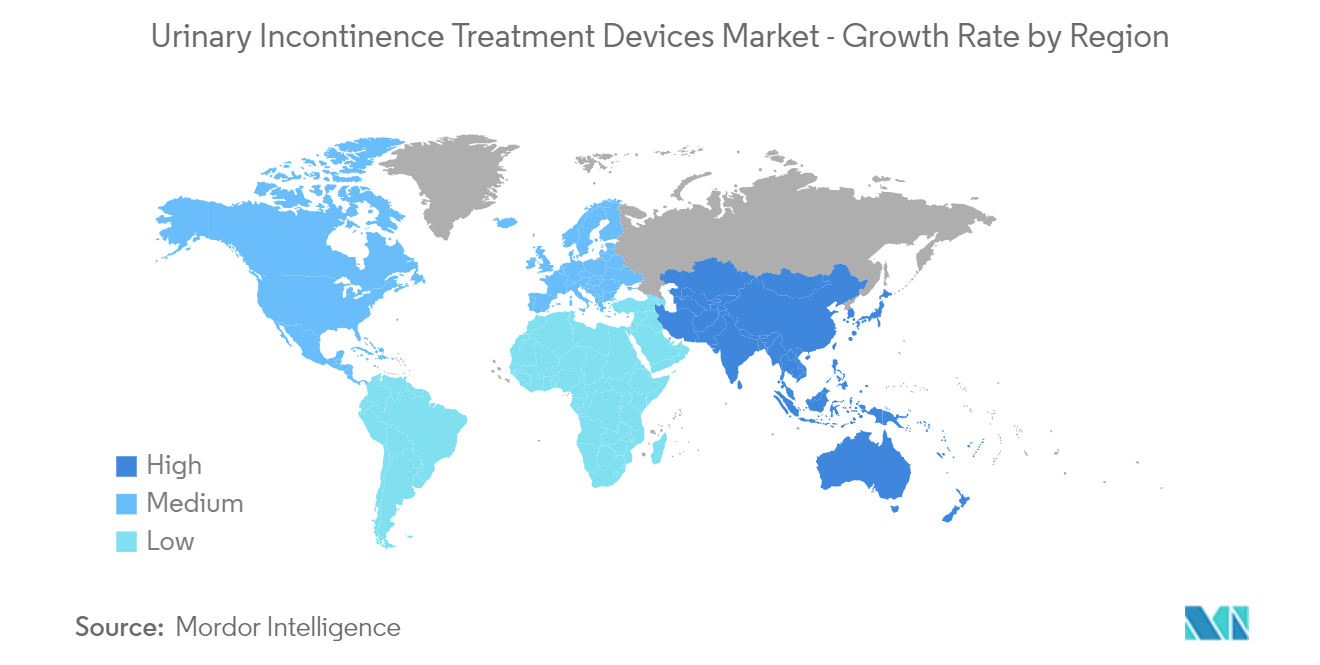Market Trends of Urinary Incontinence Treatment Devices Industry
Urethral Slings Segment Expected to Witness Healthy Growth Over the Forecast Period
Urethral sling surgery, a key component of the Urethral Slings Market, is also known as mid-urethral sling surgery. The sling material used may be muscle, ligament, or tendon tissue. It may also be composed of synthetic material, such as plastic compatible with body tissues, or absorbable polymer that disintegrates over time. The urethral slings segment is expected to witness growth as these are highly recommended for surgical treatment for Stress Urinary Incontinence, thereby impacting the Stress Urinary Incontinence Market. Factors such as the rising prevalence of urinary incontinence, rising geriatric populations, and increasing developments by key market players are expected to boost segment growth.
According to an article published by PubMed Central in December 2022, a study was conducted in the United Arab Emirates that showed that the quality of life was affected by an estimated 90% of the patients suffering from urinary incontinence. Thus, the rising burden of urinary incontinence among women and the aging population is boosting the demand for urethral slings, which is expected to propel the Female Stress Urinary Incontinence Treatment Devices Market.
According to the 2023 update by AAre Urocare, the prevalence of UI was about half as much as in women and men. Approximately 3% to 11% of men were diagnosed with urinary incontinence, and urge incontinence was the most common type. Thus, the high burden of urinary incontinence in the country is expected to boost the adoption of urethral slings and other Male Incontinence Devices.
Moreover, according to the data updated by WHO in October 2022, it is estimated that by 2030, one in six people worldwide will be aged 60 years or over, and the share of the population aged 60 years and over will increase from 1 billion in 2020 to 1.4 billion in 2030. By 2050, the number of people aged 60 years and older will double to 2.1 billion. It is also estimated that the number of people aged 80 years or older is expected to triple between 2020 and 2050 to reach 426 million. As the geriatric population is often associated with urinary incontinence, the rising geriatric population is expected to boost market growth in the Incontinence Devices Market.
Thus, the aforementioned factors, such as the rising prevalence of urinary incontinence and the rising geriatric population, are expected to boost segment growth.

North America Expected to Hold a Significant Market Share over the Forecast Period
The major factors driving the growth of the Urinary Incontinence Devices Market in North America are increases in the prevalence of urinary incontinence (UI), the geriatric population, and the demand for minimally invasive surgeries in the region.
For instance, according to an article updated by NCBI in August 2022, it was estimated that approximately 13 million Americans experience urinary incontinence annually, and the prevalence was 50% or greater among residents of nursing facilities. Similarly, according to an article published by Taylor & Francis Online in February 2023, a study was conducted in Mexico that examined the relationship between gender and the different urinary incontinence subtypes in community residents of the country in people aged 50 years old and above, it was found that in elderly females, mixed urinary incontinence had the highest incidence rate of 8.7%, which increased with age from 6.9% in 50 to 59-year-olds to 11.8% in 90-year-olds. Thus, the high prevalence of urinary incontinence is expected to boost market growth in the region's Incontinence Care Devices Market.
Moreover, the rising geriatric population is also a major factor in market growth. For instance, according to the data published by Statistics Canada in July 2022, around 7,330,605 people were 65 years of age or older in Canada, which accounted for 18.8% of the total population.
Strategies adopted by major companies, such as research and development, mergers and acquisitions, and product launches, to strengthen their market position are other factors driving the growth of the market studied. For instance, in January 2022, Owens & Minor Inc. and Apria Inc. entered a definitive agreement to acquire Apria. The acquisition was anticipated to broaden the company's incontinence and ostomy portfolio. Further, in May 2022, BlueWind Medical Ltd announced the closing of a USD 64 million Series B funding round. The funding was raised for the development of the innovative RENOVA iStim implantable tibial Neuromodulation Device under investigation for the treatment of urgency incontinence alone or in combination with urinary urgency and/or urinary frequency.
Therefore, the aforementioned factors, such as the rising prevalence of urinary incontinence, the rising geriatric population, and the increasing developments by key market players, are expected to boost the Urinary Incontinence Treatment Devices Market in the region over the forecast period.


